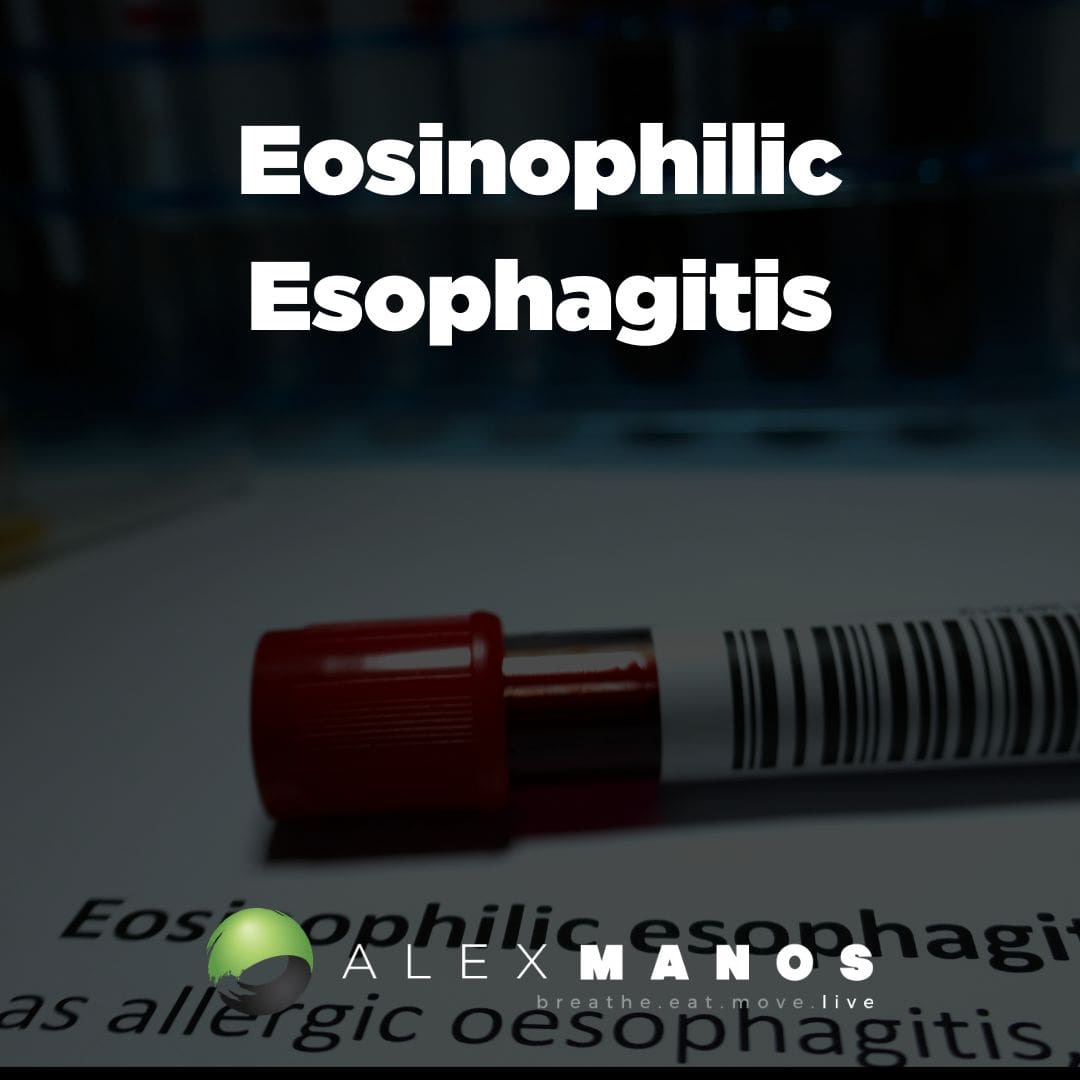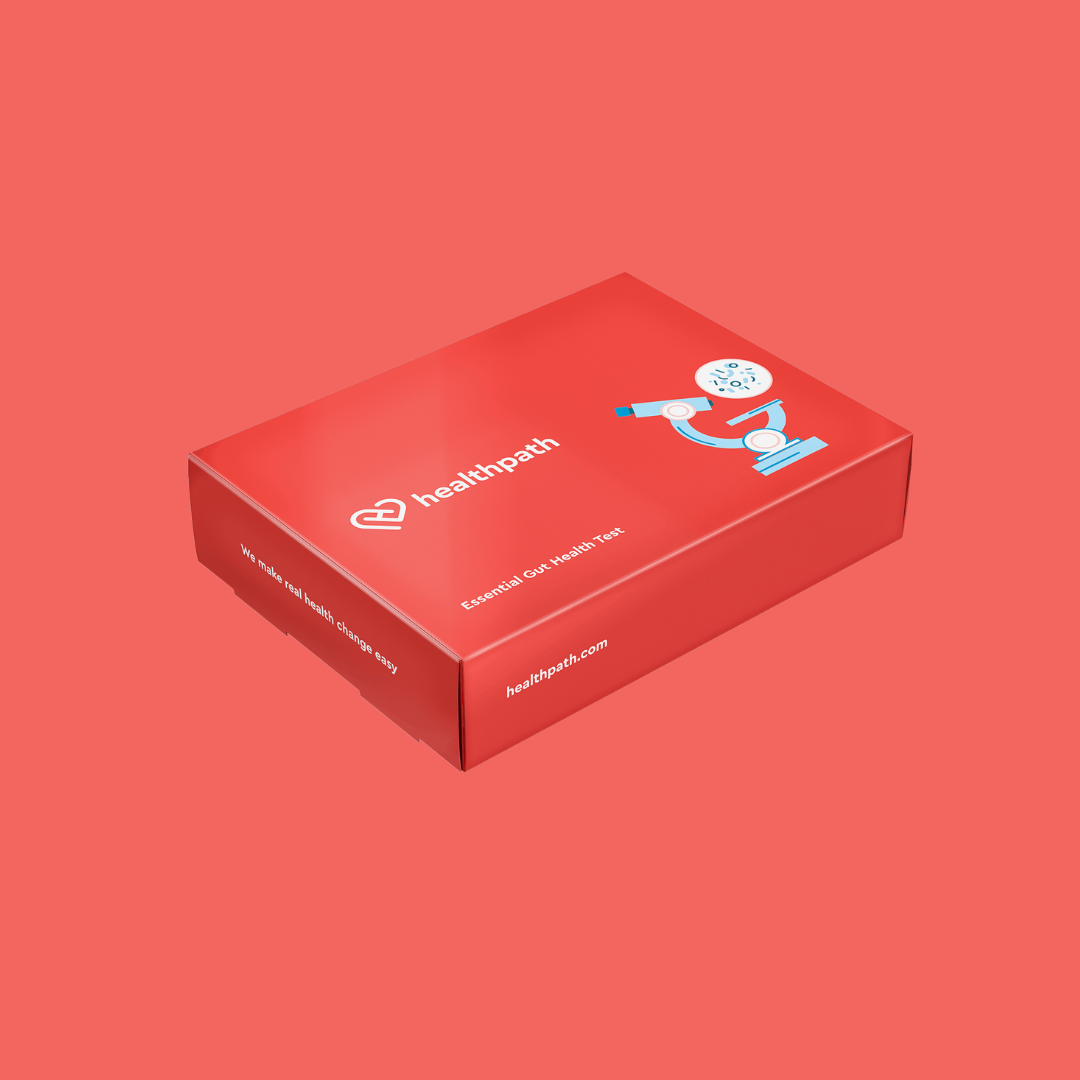What Is Eosinophilic Esophagitis?
Eosinophilic esophagitis is a chronic/remittent allergic disease, defined by inflammation on the oesophagus and symptoms of esophageal dysfunction.
What Are The Symptoms Of Eosinophilic Esophagitis?
Eosinophilic esophagitis is a disease with variable symptoms and severity, co-morbidities (atopic vs. non-atopic), treatment response, and natural history. Symptoms may include:
- Trouble swallowing.
- Chest pain or heartburn.
- Abdominal pain.
- Vomiting.
- Food getting stuck in the throat due to narrowing (this is a medical emergency)
- Stunted growth or poor weight gain in children.
Interestingly, eosinophilic esophagitis symptoms vary with age.
Toddler and young children generally experienced food refusal, feeding difficulties, and recurrent vomiting and/or regurgitation. On the contrary, school-aged children reported abdominal/epigastric pain, refractory gastroesophageal reflux, whereas adolescents and adults present dysphagia and food impaction.
How Do You Diagnose Eosinophilic Esophagitis?
Currently, the diagnosis of eosinophilic esophagitis requires the presence of more than 15 eosinophils in the biopsy from an endoscopy.
What Are Eosinophils?
Eosinophils are a type of immune cell involved in local and systemic inflammatory processes. Beyond these roles, eosinophils are fundamental to maintaining homeostasis in the tissues they reside in. Eosinophils found in the gut modulate gut barrier function and mucosal immunity and promote tissue development.
A growing body of evidence points to the eosinophil as a key neuro-immune player in the regulation of gastrointestinal function. (source)
What Causes Eosinophilic Esophagitis?
Eosinophilic esophagitis is a multifactorial disease typically characterised by a type 2 (T2) inflammation. The impaired epithelial barrier function plays a pivotal role in the pathophysiology of eosinophilic esophagitis, inducing the release of alarmins (including IL-15 and IL-33 – important to remember when we discuss treatment), which then activates specific immune cells called type 2 innate lymphoid cells and basophils.
The subsequent release of pro-inflammatory molecules, IL-4, IL-5, and IL-13, recruits and expands the eosinophilic inflammation.
The consequences of this sustained inflammation include tissue remodeling and esophageal dysfunction.
It is estimated that eosinophilic esophagitis affects up to 1 in 1,000 patients in the USA, mostly Caucasian patients and male sex. Interestingly the prevalence varies widely across different countries.
Although the pathogenesis is not entirely understood and is likely non-IgE-mediated, food allergens are known to trigger eosinophilic esophagitis, stimulating the already dysregulated immune cells through the impaired esophageal epithelial barrier. Most patients with eosinophilic esophagitis are allergic to 1–3 foods that trigger esophageal inflammation, according to Koch’s postulate.
Esophageal inflammation is resolved once the food(s) is removed from the diet, and reproducibility reactivates it when the culprit allergen(s) is reintroduced.
The Hygiene Hypothesis And Eosinophilic Esophagitis
The prevalence of eosinophilic esophagitis is increasing in developed countries, and this has resulted in the hygiene hypothesis to be considered as a key contributory factor. The hygiene hypothesis is essentially the idea that microbial exposure in early life cultivates immune system tolerance. Therefore, a lack of pathogenic exposure in early life is thought to ‘disable’ the immune system’s tolerability, so much so that it increases one’s susceptibility to allergic diseases.
So if the immune system was built on an unsteady foundation (a lack of early life exposures to microbial pathogens), a defect is imprinted on the immune system. The reprogrammed immune system in the gut shifts towards a Th2–an IL-4-, IL-5-, and IL-13-mediated–phenotypic expression. This is what we see in eosinophilic esophagitis.
Tolerance defects likely include Caesarian sections, lack of breastfeeding, stay in neonatal intensive care units, or antibiotic use.
How Do You Treat Eosinophilic Esophagitis?
The current therapeutic management of EoE is based on two cornerstones: medication and diet therapy, both effective but limited by several critical issues.
The current therapeutic management of EoE is based on two cornerstones: the medication (proton pump inhibitors [PPIs] and topical corticosteroids) and diet therapy, both effective but limited by different critical issues. Patients with EoE should be maintained on monotherapy when effective. However, if monotherapy fails or loses its efficacy, a combination therapy (diet + topical steroid) may be indicated. Although not already approved, biological therapy with dupilumab showed promising results in adults with EoE, improving symptoms, esophageal inflammation, and distensibility.
When correctly administered (1 mg/kg/day, twice daily), PPIs are effective in about 50% of children with EoE. The long-term effectiveness of PPIs is still debated and might be related to specific genetic polymorphisms. However, disease remission might appear more sustained in patients with the inflammatory phenotype than those with the fibro-stenotic or stenotic phenotype. Therefore, as widely reported, PPI response is not homogeneous and prolonged in all patients.
Please note I do not recommend the use of PPI’s due to their side effects.
H. Pylori And Eosinophilic Esophagitis
Previous or current infection with Helicobacter pylori has been reported to protect against eosinophilic esophagitis, perhaps owing to H. pylori-induced immunomodulation.
In 2019 a meta-analysis evaluated 11 observational studies comprising data on over 350,000 people worldwide. H. pylori exposure vs non-exposure was associated with a 37% reduction in odds of eosinophilic esophagitis. (source)
The Gut Microbiome And Eosinophilic Esophagitis
The gut microbiome was evaluated from 12 eosinophilic esophagitis patients and 12 controls. Those with eosinophilic esophagitis showed lower gut microbiome diversity. There was an increase in the family of bacteria call Bacteroidetes and a decrease in the family Firmicutes, and, a significant reduction in Clostridia in patients with eosinophilic esophagitis. (source)
The authors speculated that Clostridia based interventions could be tested as adjuncts to current therapeutic strategies in EoE. (source)
Probiotics And Eosinophilic Esophagitis
The probiotic Lactococcus lactis NCC 2287 has previously been shown to decrease clinical scores in a food allergy model.
Also, NCC 2287 is a potent inhibitor of the eosinophil survival cytokine IL-5 and an inducer of the immune-modulatory cytokine IL-10 and in Th2-skewed cultures of peripheral blood mononuclear cells.
The probiotic Bifidobacterium lactis NCC 2818 is also known for its immunomodulatory properties in allergy. (source)
Researchers tested L. lactis NCC 2287 and B. lactis NCC 2818, for their capacity to decrease oesophageal inflammation in eosinophilic esophagitis murine model. (source)
The proof in the animal model recommends that specific probiotics might be gainful in lessening oesophageal eosinophilic inflammation. Instead, probiotics seem to permit a more comprehensive approach which may restore and maintain homeostasis in humans. (source)
I can’t find a product containing these strains but Bifidobacterium species, in general, may help control inflammation by supporting T-reg cell proliferation.
In anther study a probiotic (called KidiLact) was added to the medication regimen of 15 patients, while the next 15 patients received a placebo (control). There was a significant reduction in the score of chest pain and poor appetite in those taking the probiotic. (source)
KidiLact product contains 10 beneficial bacterial strains, including Lactobacillus casei, Lactobacillus acidophilus, Lactobacillus rhamnosus, Lactobacillus bulgaricus, Bifidobacterium infantis, Bifidobacterium breve, and Streptococcus thermophilus.
You may like to read my blog The Best Probiotics.
Butyrate And Eosinophilic Esophagitis
The short chain fatty acids butyrate and propionate restore the barrier function of esophageal epithelial cells after an inflammatory insult and may be of therapeutic benefit in the management of EoE (source).
My recommended product is Tributyrin.
You could also consider the prebiotic PHGG which has been shown to increase the abundance of butyrate producing bacteria.
Get 10% off your supplements at Healthpath using code ‘alexmanos10’.
Quercetin And Eosinophilic Esophagitis
Results may suggest that quercetin will be a good candidate for the supplement on the management of eosinophil-mediated diseases (source)
Vitamin D And Eosinophilic Esophagitis
New evidence has been published on the role of vitamin D in the pathophysiology of Th2 inflammation and eosinophilic esophagitis in particular. It has been shown that vitamin D has important interleukin (IL)-13 antagonistic properties (remember I told you to remember IL-13 at the beginning?) and was shown to regulate epithelial barrier and immune functions (source)
Vitamins A, C, and deglycyrrhizinated liquorice are also warranted.
Diet For Eosinophilic Esophagitis
The choice of one or the other therapy might depend on the different disease phenotypes (allergic vs. non-allergic, inflammatory vs. fibro-stenotic), patient’s age (adult vs. childhood-onset), food habits, patient/family preference, and familiar financial resource.
Three main dietary approaches have been proposed with variable efficacy rates and specific advantages and disadvantages:
- Elemental.
- Empiric.
- Allergy test-directed elimination diets.
Although the therapeutic choice mainly depends on clinician experience and patient’s needs, several clinical aspects must be considered before prescribing a diet therapy, especially in children.
According to international guidelines, the diet approach is considered the first-line treatment of eosinophilic esophagitis and is as effective as medication therapy.
It is widely demonstrated that foods are the primary triggers of eosinophilic esophagitis; indeed, food elimination diets (FEDs) have demonstrated complete remission of eosinophilic esophagitis, with higher rates (>90%) in patients treated with elemental diet than empirical FEDs and test directed diets.
However, FEDs are challenging and are not risk-free. Patients on diet therapy may potentially develop nutritional deficiencies, eating disorders and experience a low quality of life and high psychological impacts.
Then, clinicians should widely explain to patients and their families the advantages and disadvantages of diets to choose judiciously. Children and adults, candidates for diet therapy, should also be informed of the need to undergo several endoscopic and clinical evaluations to confirm or assess disease remission. Patients and parents of children with EoE should know that more restrictive diet therapies (elemental and empirical FED) may be expensive and alternative foods may be often found only in specialty stores.
Elemental Diet
The elemental diet consists in removing all foods. Thus, patients are exclusively fed with an aminoacid-based formula for at least 6 weeks. The elemental diet is the most effective treatment, and several studies reported high complete remission rates in children and adults with active EoE. EoE patients treated with the elemental diet experienced a significant reduction in their symptoms and achieved complete histologic remission in 90 and 94% of pediatric and adult cases, respectively. Moreover, the highest efficacy rates are primarily observed in patients with a non-stricturing phenotype.
The elemental diet is not the first-line approach for its limitations in most cases. Elemental diet is often proposed as rescue therapy or temporary solution.
Food Elimination Diets
Food elimination diet is the most widely used diet treatment for EoE.
The first proposed food elimination diet was founded on avoiding the six most common food-triggers of EoE in the Western diet, such as milk, wheat, egg, soy/legumes, peanut/tree nuts, and seafood/fish. Patients should be advised that all these foods should be avoided both in fresh and backed forms.
The 6-food elimination diet (FED) effectively induces histologic remission in about 74% of children and 70% of adults with EoE.
Studies assessing the efficacy of 6-FED have been fundamental to find that the most common food triggers are cow’s milk (up to 85% of the pediatric cases), followed by wheat/gluten (up to 60%), egg, and soy/legumes with geographic variations, primarily due to the different food cultures. Consequently, nuts and fish/seafood rarely trigger EoE. Therefore, most of the patients who histologically recover with 6-FED were allergic to only 1–3 foods.
The elimination of cow’s milk (1-FED) demonstrated disease-remission rates of 44–51% in pediatric patients. In a recent systematic review with meta-analysis, the overall efficacy of a milk-free diet was about 70%.
There are two strategies for avoiding foods in FED: a top-down approach and a step-up approach.
The step down approach is removing milk, wheat, egg, soy/legumes, peanut/tree nuts, and seafood/fish (6-FED) simultaneously. If disease-remission is achieved, the avoided foods can be sequentially added to the patient’s diet, with clinical evaluations and esophageal-gastroduodenoscopy after each reintroduction, to identify the true allergenic trigger(s). Although more effective, this approach is limited by several endoscopic procedures (at least six), high diet restrictions, and potential nutritional deficiencies that may negatively impact patient and family compliance.
The step-up approach consists of the initial elimination of one (1-FED) or two (2-FED) more common allergenic foods (milk and wheat). If a complete remission is not achieved, diet is further restricted to a 4-FED and eventually to 6-FED.
Allergy-Test Directed Elimination Diet
EoE is a T2 immune-mediated disease, where IgEs do not have a specific pathogenetic role. Based on the results of skin prick tests and atopy patch tests, Spergel et al. reported that about 75% of children achieved a significant improvement in EoE symptoms and esophageal inflammation.
However, subsequent studies found that atopy patch tests, skin prick tests, food-specific serum IgEs did not reliably predict food triggers and did not have a clear role in evaluating patients with EoE. Moreover, a meta-analysis revealed that this diet approach induces histologic remission in 45.5% of patients, and efficacy rates were significantly lower in adults than in children.
According to this evidence, current American and European guidelines do not recommend allergy test-based dietary elimination therapies. (source)
The Importance Of Emotional Wellbeing
A considerable proportion of adult EoE patients suffers from mental distress, with a 3‐fold risk of significant anxiety in those patients younger than 35 years. (source).
Animal studies (source) have found significantly increased eosinophil and mast cell counts in the oesophagus as a result of stress.
Focusing on your emotional wellbeing its thus paramount when seeking improvement in EoE. This could include: walks in nature, massage, meditation, breathwork, yoga, tai chi, gratitude practice…etc.
Alex is a certified Functional Medicine Practitioner (IFMCP) and has a MSc in Personalised Nutrition. He is also a breathwork facilitator with a background in personal training and massage therapy. He also runs The Resiliency Program - a 24 week program aimed at building physical, mental, emotional, and spiritual resilience.





